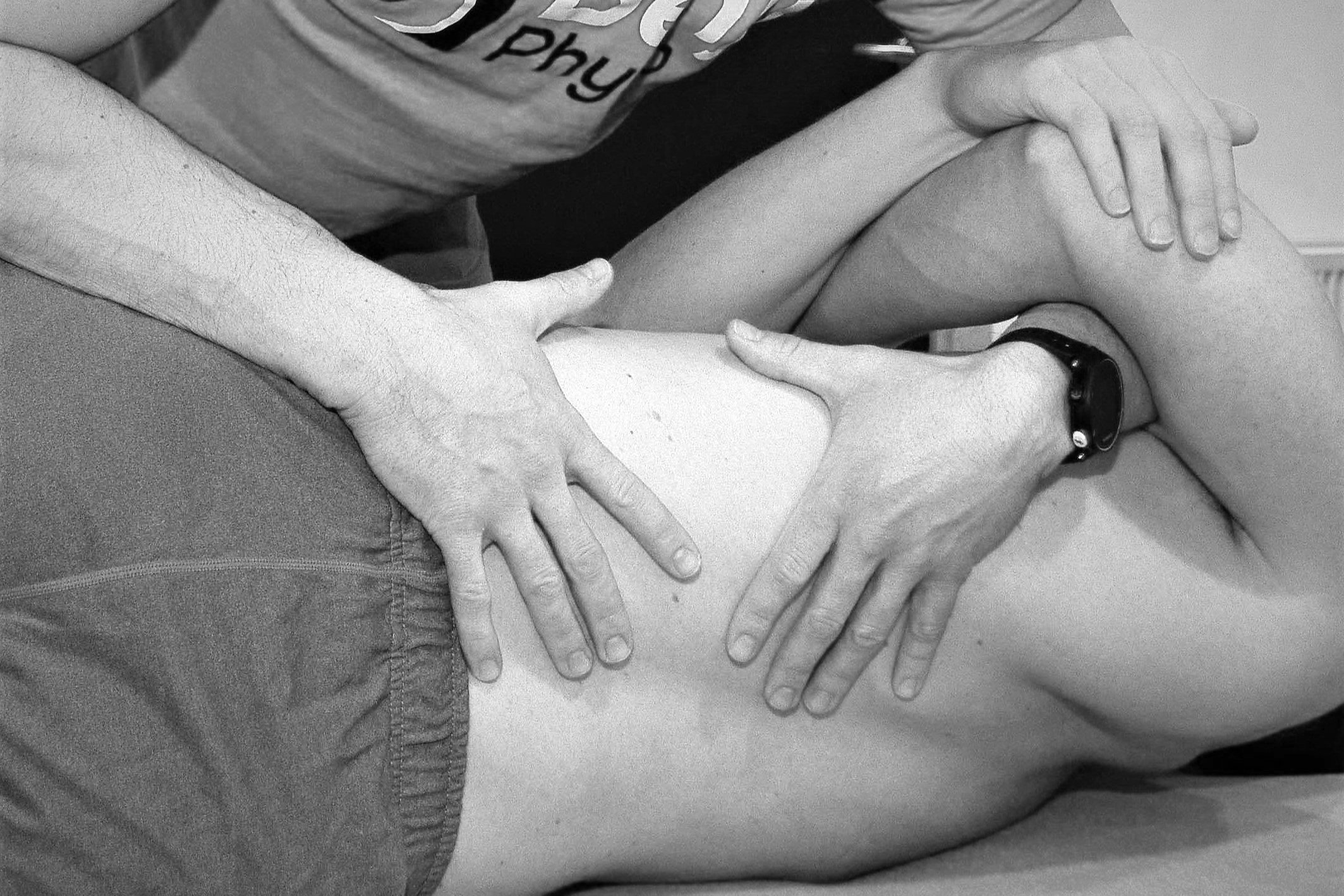
Do you have a problem with your back?
We offer personalised treatment solutions to help you manage your back pain efficiently.
Lower back pain is the most common issue patients come and see us about.
-
A disc bulge occurs when the centre of the intervertebral disc is pushed towards the outer rings of the disc. It is a completely normal condition and most people live pain-free with disc bulges.
Unfortunately sometimes, one wrong move with produce extra stresses on the disc which will increase the bulge and can cause painful muscles spasms and restrict your movements significantly. This is your body protecting the injured area to give it a chance to heal.
As scary as this may sound and as painful and limiting it can be generally easily treated with physiotherapy.
-
This happens when the joint between two vertebrae in your back becomes inflamed (very commonly seen after a car incident or a violent rugby tackle or , the older ppulation, when the joint shows signs of wear and tear and/or arthritis.
Physiotherapy is the best treatment for this type of pain and we will help decrease the pain with hands-on therapy and gentle movements.
-
Sciatica occurs when the Sciatic nerve is impinged by either a disc bulge, a inflamed facet joint or a stenosis. Pleased read our blog on how to treat sciatica for further info.
-
Any pain lasting longer than a few weeks, even if there are periods of relief, is considered and treated as chronic pain.
Chronic back pain is always there in the background, sometimes better, sometimes worse. But it’s something you carry with you every day.
Physiotherapy is the best treatment option for chronic back pain.
We will help you to control your pain a lot better by finding the right management for your symptoms.
-
Spondylosis is a condition where the bone forming the joint between two vertebrae (the pars interarticularis) is fissured/broken.
Spondylosis is rather common in athletes (up to 47% of them in certain sports) and will affect 3 to 6% of the elderly population.
Physiotherapy has a extremely important role to decrease the pain caused by the fracture and, more importantly to help the sufferer manage the problem as well as possible during their sporting career and protect them from further damage.
-
Spondylolisthesis is a spondylosis that went to far and caused anterior slippage of one vertebral body to the adjacent inferior vertebral body (generally L5 over S1).
Spondylolisthesis is present in 6% of the population and generally found in the over 60’s
Physiotherapy is the best treatment. We will help you to strengthen your back to maintain good function and will give a lot of good tips to reduce your pain on a day to day basis.

We also specialise in back post-op rehabilitation.
From a few days after your surgery to return to normal activities, we will accompany through your healing journey and help you make the most of your operation.
Being under the care of a physio from Day one, will guarantee a safe progress without taking any risk of worsening.
-
Removal of intervertebral disc tissues to remove stress of the entrapped nerves.
-
Injection of corticosteroids to decrease inflammation and pain in the facets joints.
-
Injection of corticosteroids to decrease inflammation and pain in the spinal canal.
-
Spinal fusion or Spinal stabilisation for scoliosis correction, spondylolisthesis or after major trauma.
✔ Find the source of the pain
✔ Get rid of it
✔ Take control
✔ Prevent
“The NHS’s response to back pain often only delivers a short relief, with painkillers from your GP or unspecific exercises which offer no relief in the long-term.
Chronic back pain is treatable with good physiotherapy.
Don’t accept to be in pain!”
-
During your initial assessment, we will first talk about you, your pain and how it affects your life. Your therapist will then assess run a full assessment which will include.
• Your joints: Your range of movement tells us what joints are affected.
• Your muscles: Your muscle strength and agility shows us what muscles are affected and if there are any trapped nerves.
• Your reflexes: If required, this helps us find out where in your spine the nerve is trapped.
• Your shoulders: If your neck is not the cause of the pain, we run extensive shoulder tests to help us determine the source.
• Your diagnosis: After getting to the root of your pain, you get a diagnosis, we explain to you what’s going on and put together a treatment plan for you.
We strongly believe that if you understand your pain, you can manage it better.
We will always make sure you understand what caused your back problem, what can help you get better and how to avoid it in the future.
-
Your treatment will depend on the severity of your pain and the integrity of the tissue. We have a wide range of treatments available to relieve your back pain.
When you are in acute pain, our priority is to reduce it. We have a wide range of therapeutic tools which can help you including
• Acupuncture
• Massage
• Ultrasounds
• TENS (transcutaneous electrical nerve stimulation)
• Taping
Because moving is the best way way to you recover, we will also devise on day one an exercise plan for you, specifically targeting your injury or pain.
Once the pain lessens, we will put a specific strengthening exercise programme in place for you to bring you back to your full fitness.
Regular massage and acupuncture might be required during that period to help you keep the symptoms at bay.
Finally, you will be discharged with the knowledge and the exercises to prevent the problem from coming back.
In rare cases, we might need an X-ray or MRI to check the extent of the injury and to see if you require an operation.
-
Once the acute pain is away, your therapist will offer a long term exercise programme which will target any weaknesses that might have contributed to your injury in first place.
“There are different types of back pain with different causes. But whether you feel acute pain from a recent incident or suffer from long-term pain, our expert physiotherapists will determine the cause and the right treatment for you.”
